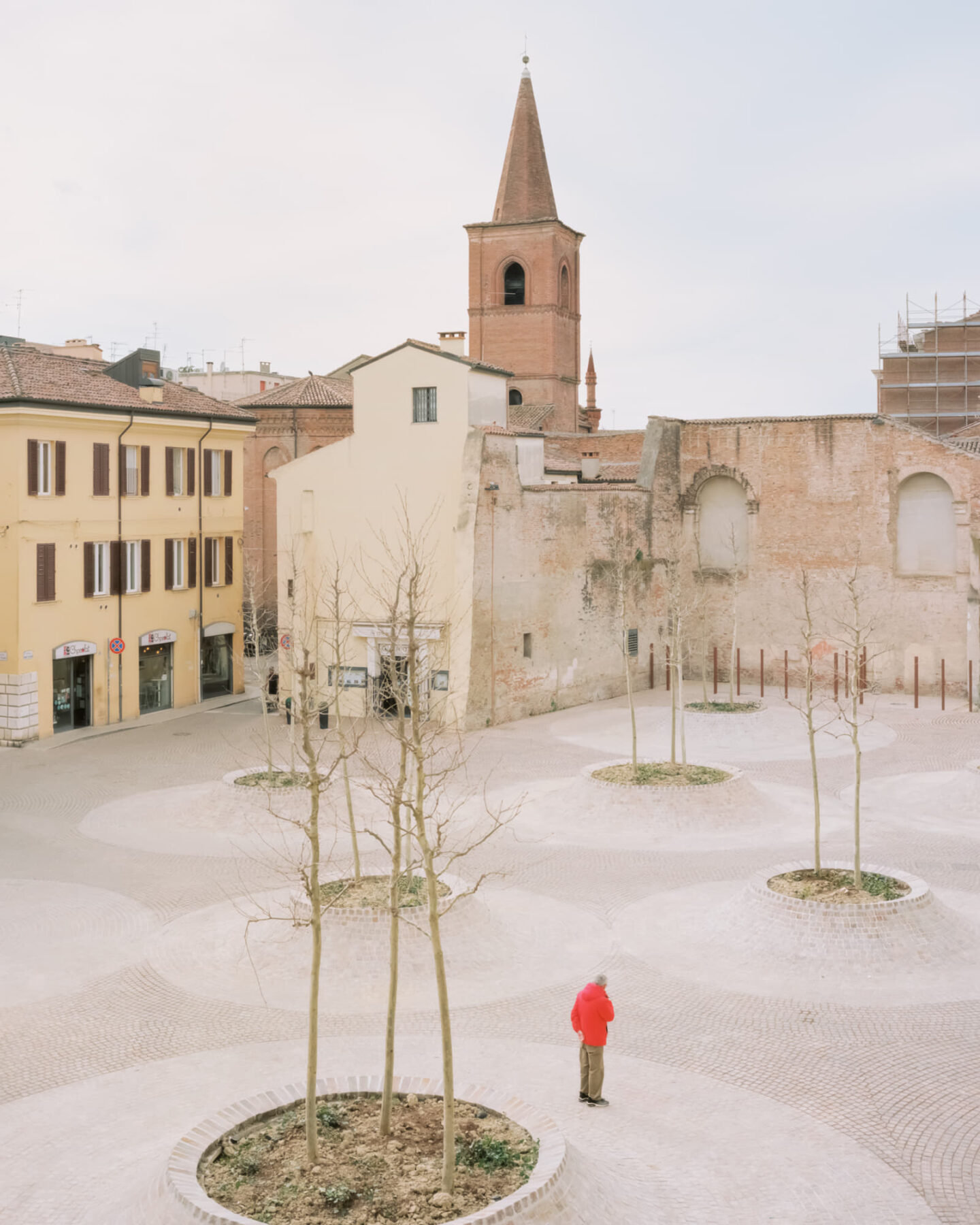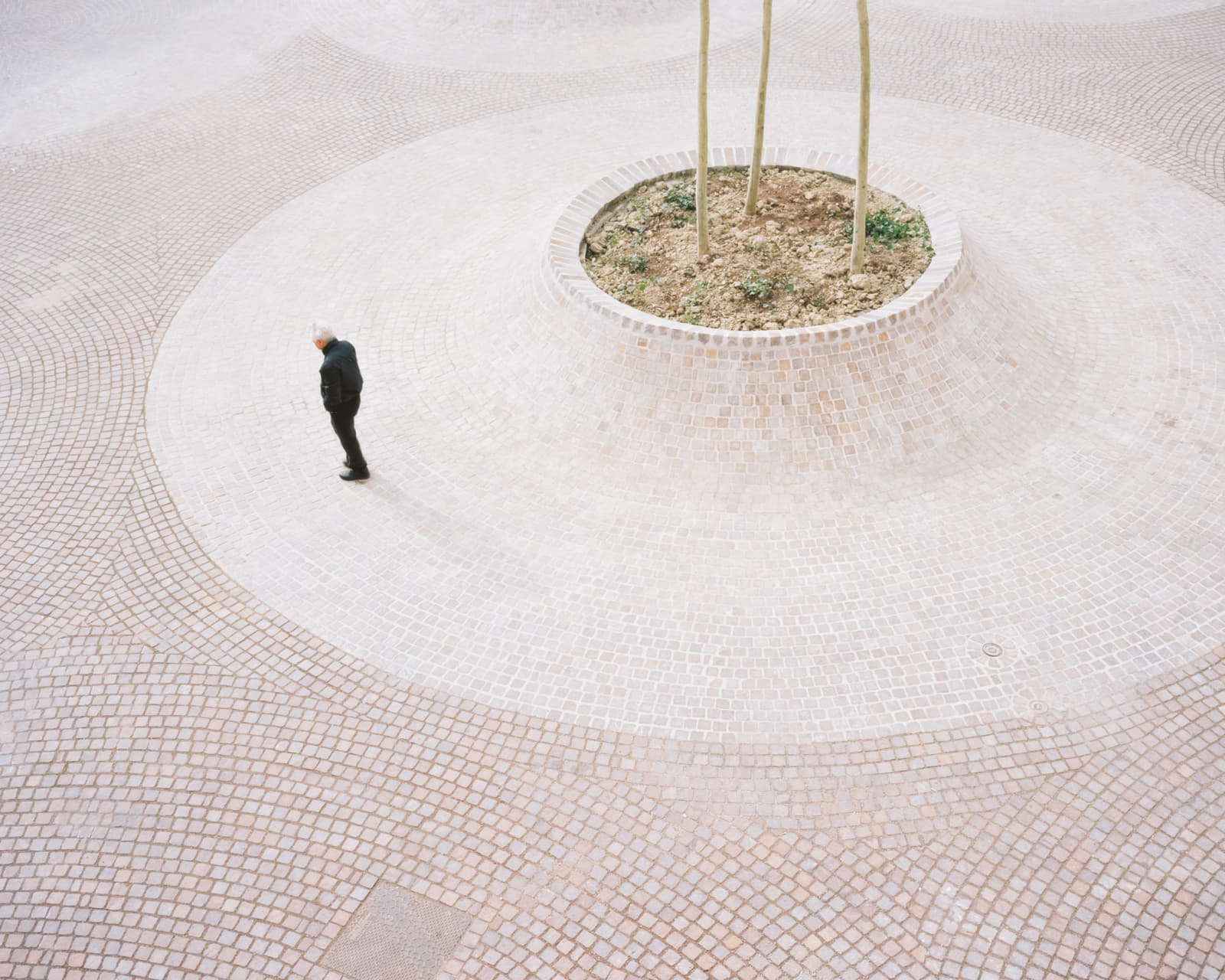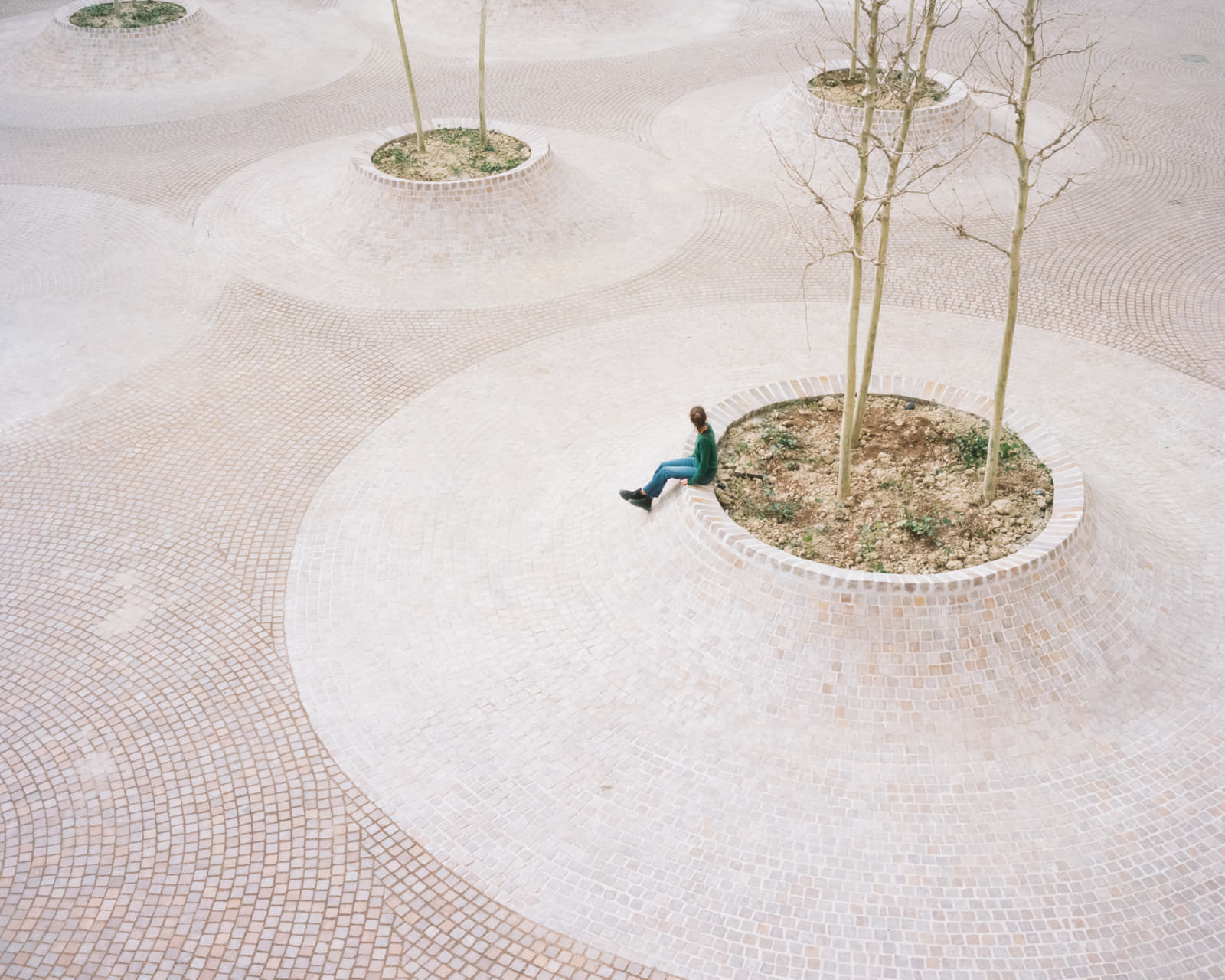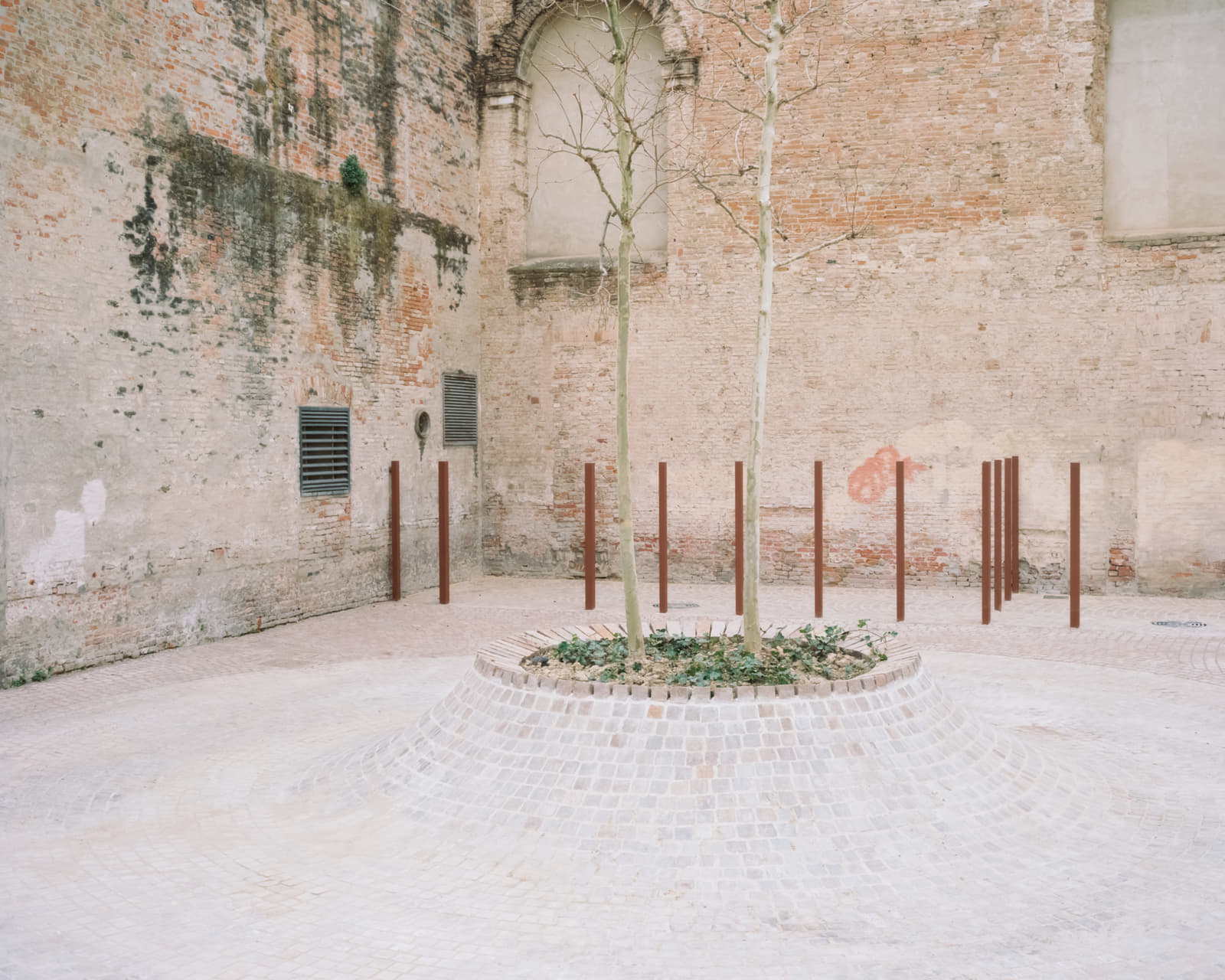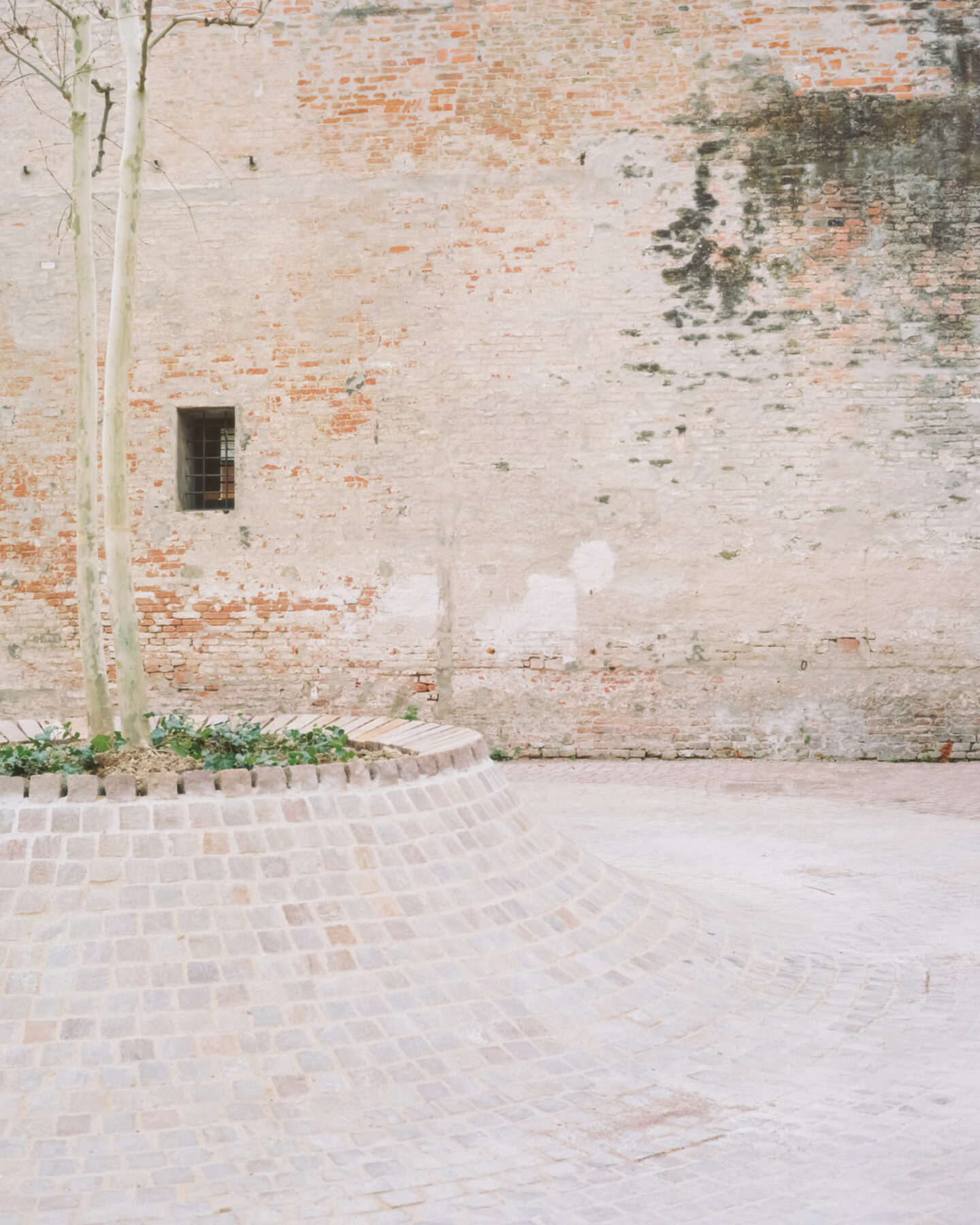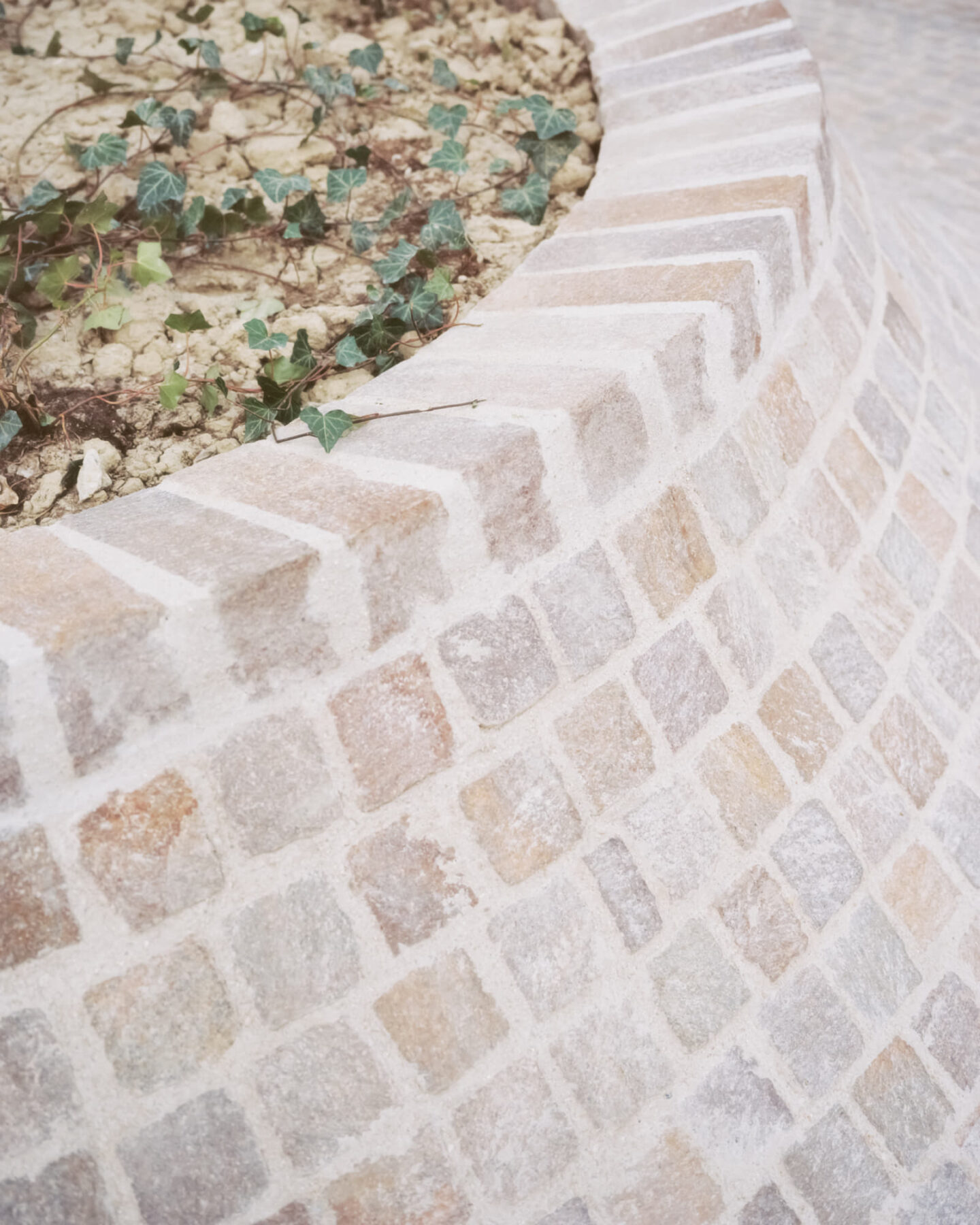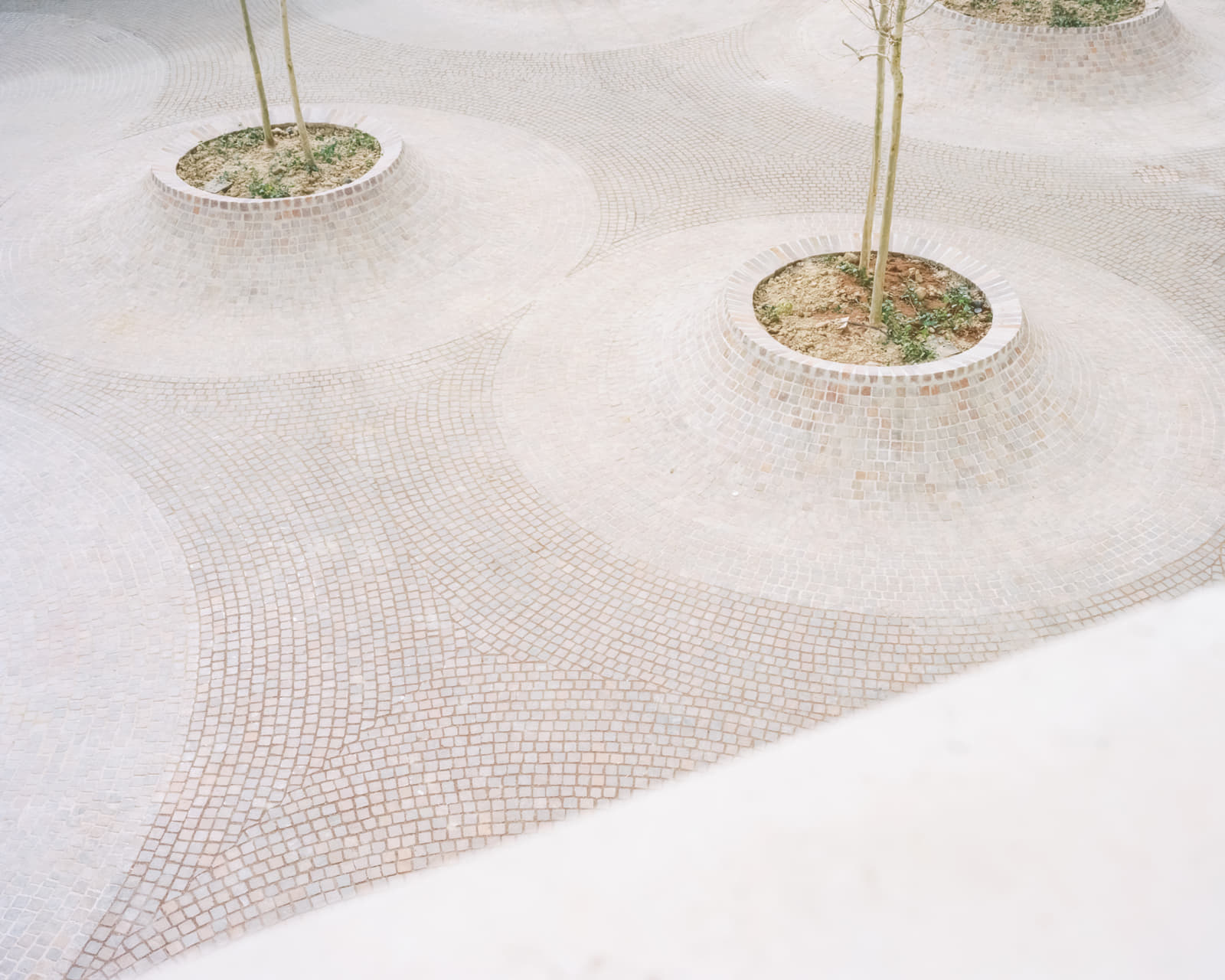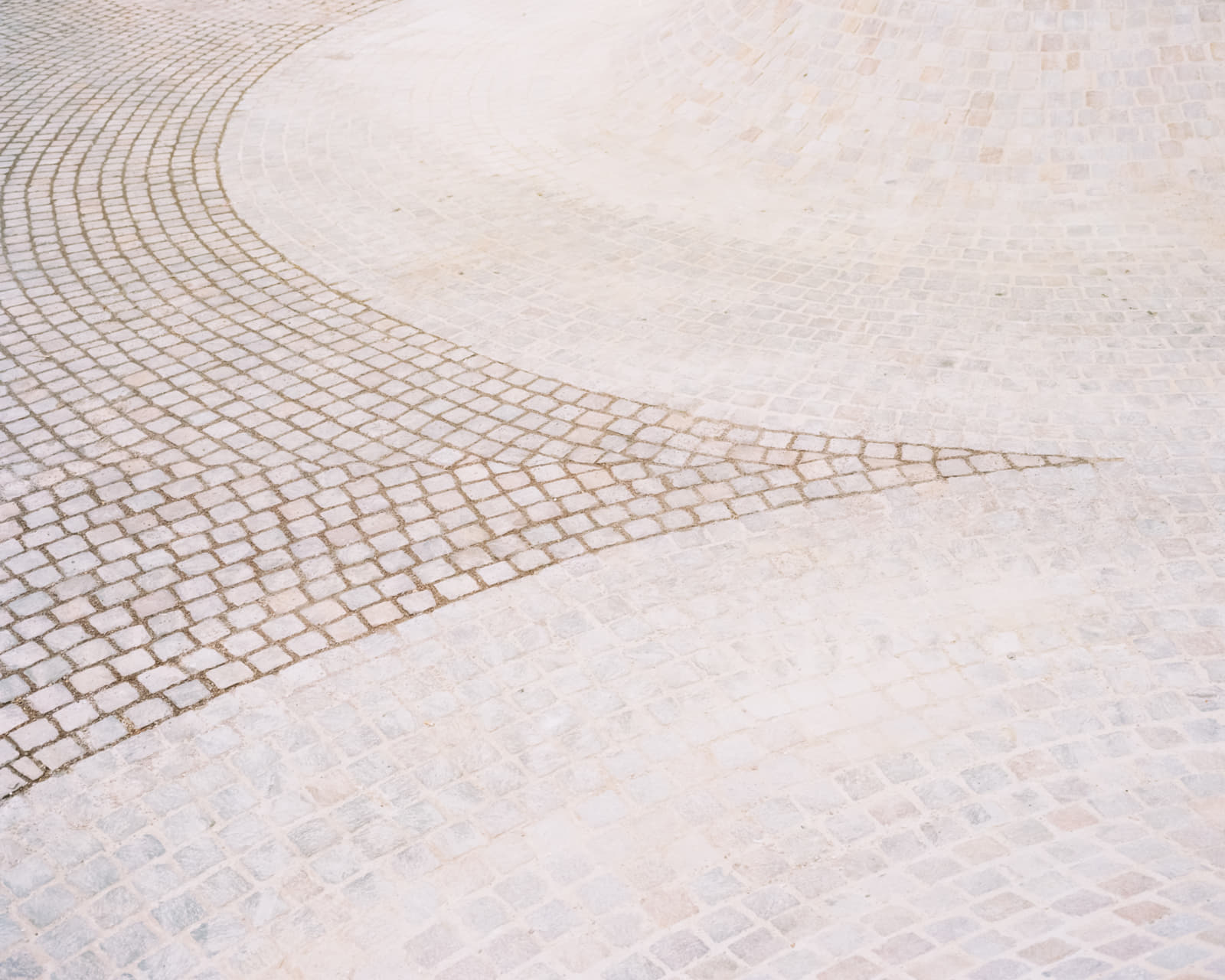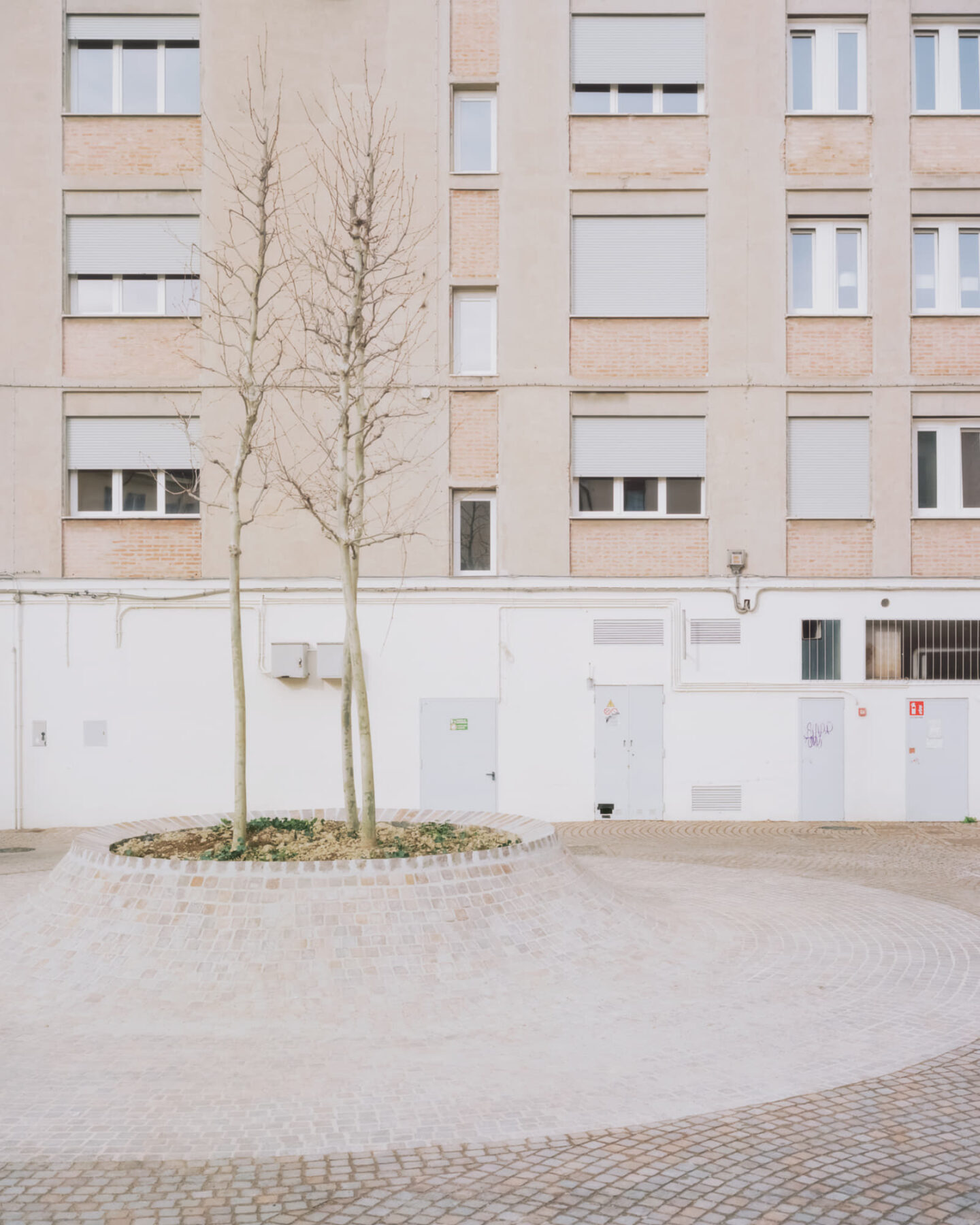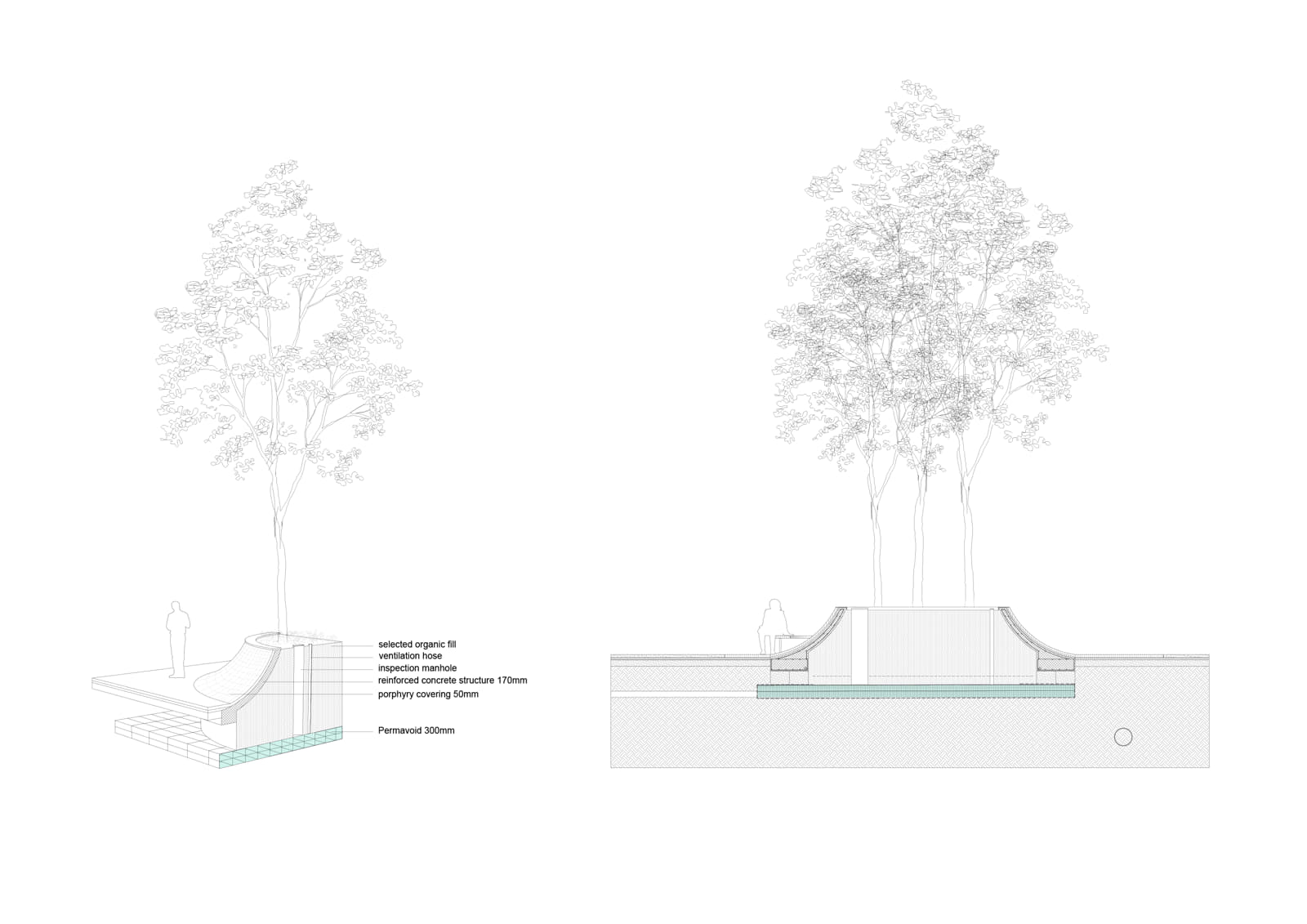Piazza Cortevecchia in Ferrara, Italy was redesigned by INOUT architecture studio as a “traditional” urban square, a continuous ground, a tree-lined area, a special topography inviting everyone to move around and encouraging the pluralities of uses.
The new Piazza Cortevecchia designed by INOUT architecture studio was officially open in Ferrara following a design competition and direct involvement of citizens in choosing the most suitable and representative project for the community.
The redevelopment project of Piazza Cortevecchia, in the heart of the historic center of Ferrara, is the winning proposal of the public competition announced by the Municipality of Ferrara in May 2022, within the “EXPERIMENTAL PROGRAM OF INTERVENTIONS FOR ADAPTATION TO CLIMATE CHANGE IN THE URBAN ENVIRONMENT” promoted and funded by the Ministry of Environment.
A SQUARE
Close to Piazza Municipale, bordering the main city squares while adjacent to the recent multi-storey car park on Via Borgoricco, nearest to the historic centre, the intervention area is characterised as a true gateway to the heart of the historic city, as well as a place with intense traffic, overlooked by a multitude of commercial activities, bars and restaurants.
Such set of characteristics pushed the project towards the believe that this void is inclined to be an actual new urban square, in its most “traditional” meaning: i.e. a void that can be crossed, flexible, spontaneously colonised, suitable for hosting a variety of events and activities, small food and wine markets, shows, encouraging the possibility of stopping, spontaneous use, the plurality of installations and happenings.
A continuous, ever flowing, available, fully accessible ground, free of discontinuities, steps and ramps, suitable for everyone to move around.It uses the same material codes to highlight the recognisability and continuity with the neighbouring city squares.
A TREE-LINED SQUARE
Another challenge of the project is making the square a green oasis capable of implementing and realising specific ecosystem benefits.
The project holds that the most effective and economical measure to improve climate comfort conditions is the introduction of trees, extraordinary ecosystem tools to intervene against the urban heat island, water run-off and air pollution.
The entire project therefore takes place in implementing the essential idea of a tree-lined square, in which the trees become the great protagonists of the public space, with their foliage, their shade, their architecture, transforming the square into a green oasis.
THE TREES
It is the liquid shade of the Plane tree (Platanus Platanor® ‘Vallis Clausa’) that was identified as the essential ingredient to structure the square as a green oasis. The Plane tree is an imposing tree, of the first magnitude, with a rounded and expanded shape, and is rather fast growing. It is a species that adapts to all terrains, prefers a position in full light and tolerates heat and drought, which also guarantees high absorption of CO2 (>2000kg CO2 in 30 years), high absorption of gaseous pollutants (O3, NO2, SO2) and high PM10 capturing capacity.
In the layout scheme of the new trees, in the search for uniformly distributed shade, the identification of green islands is proposed, of dense vegetated points, structured through the articulation of several trees placed side by side and intended to contribute – a typical characteristic of the Plane tree – to a “single crown” effect.
THE GROUND
The presence of underground utilities, foundations of ancient buildings and archaeological remains makes it necessary to plant trees at higher levels than the current walking surface, in order to reduce the depth of the excavations as much as possible.
Thus, to make room for the new trees, the continuous stone ground of the square is rippled, acquiring three-dimensionality, determining the formation of specific atolls available to plant communities. The green islands are truncated cones, which emerge from the ground in material continuity with it, of variable diameter and a maximum height of one metre above the walking surface, with a section that softly connects to the level of the square, accompanying and containing the development of the root system of the trees.
The laying of the porphyry cubes also follows the specific topography created: setting a rich geometric design of concentric circles. The choice of porphyry, in addition to setting an evident material continuity with the main historic urban spaces of the city, is also motivated by the possibility of making the sealing of the joints drainable, and therefore the paving itself.
THE UNDERGROUND
The project goes deeper than the pavement and the bedding layers, imagining an equally crucial “underground square”, which defines a highly innovative underground space that transforms rainwater from a potential problem to a precious resource.
The project in fact includes the insertion of a rainwater collection layer, Permavoid System: which, like a sort of large sponge, collects and conserves rainwater, to return it, through natural capillary mechanisms activated by the roots – passive capillary irrigation – to the soil where the trees are planted, without using energy, pumps or valves.
With this system it is possible to collect rainwater, avoiding an overload of the sewer system in the event of intense weather events, and to conserve it so that it can be used in prolonged periods of drought.
Drawings
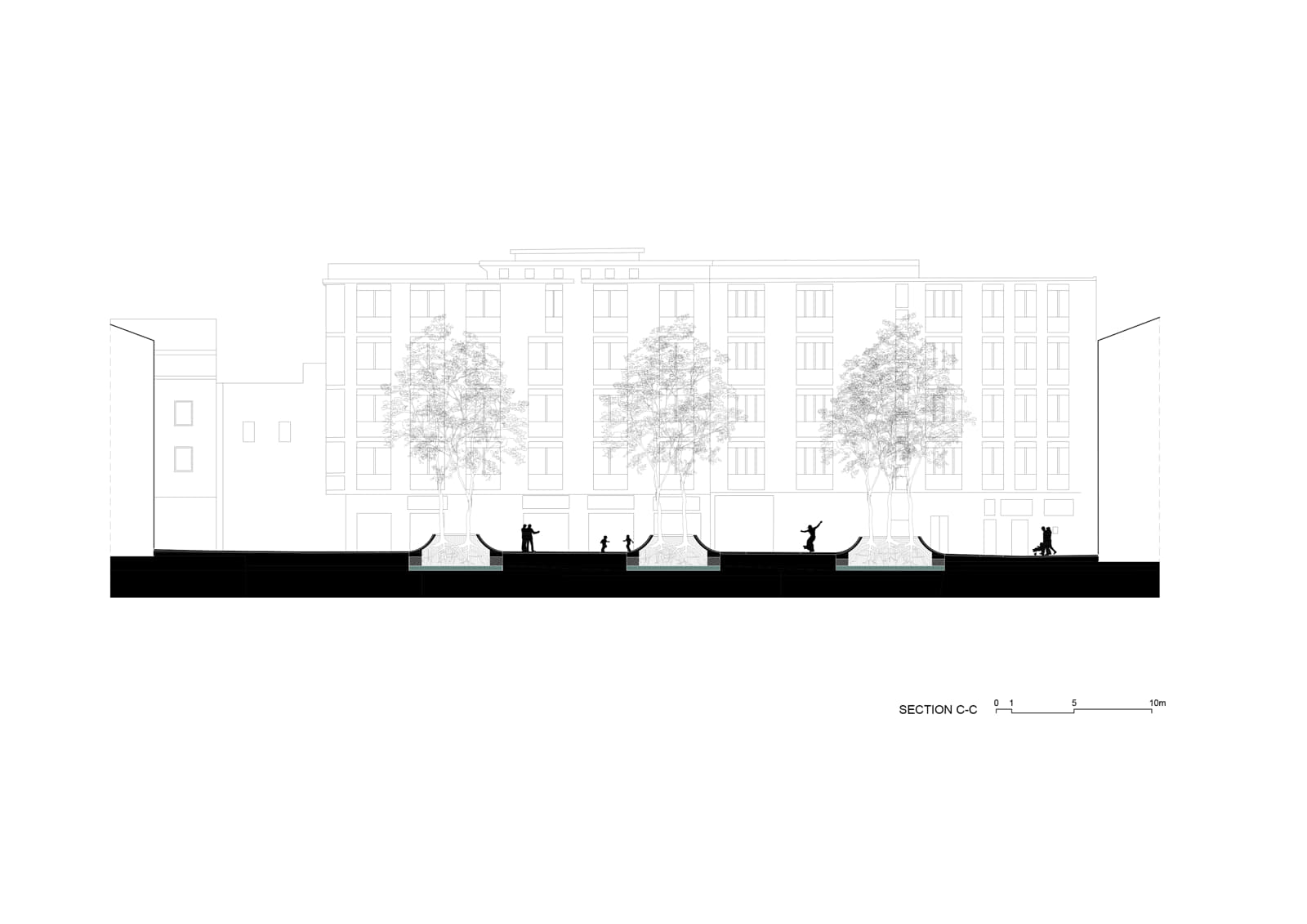
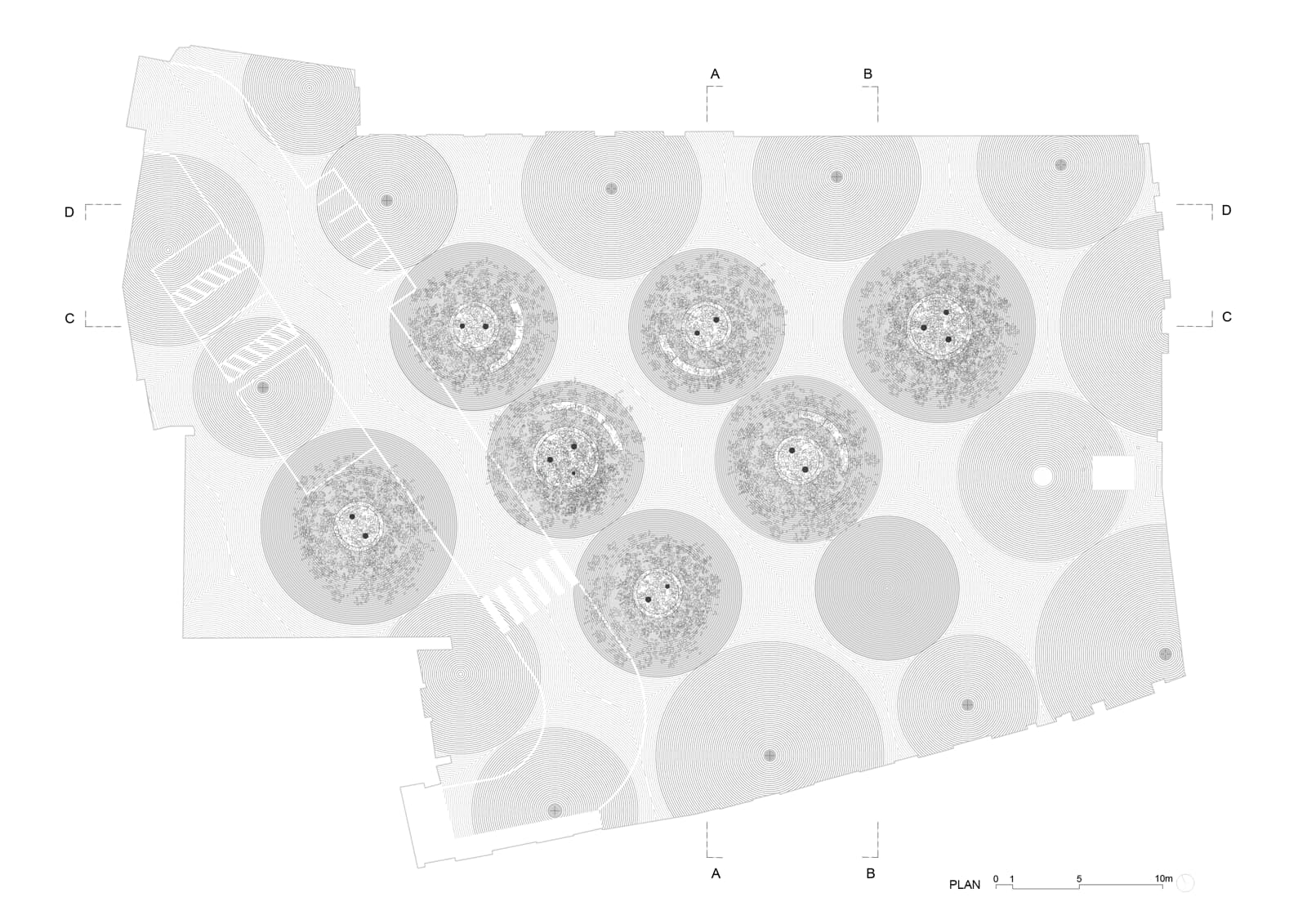
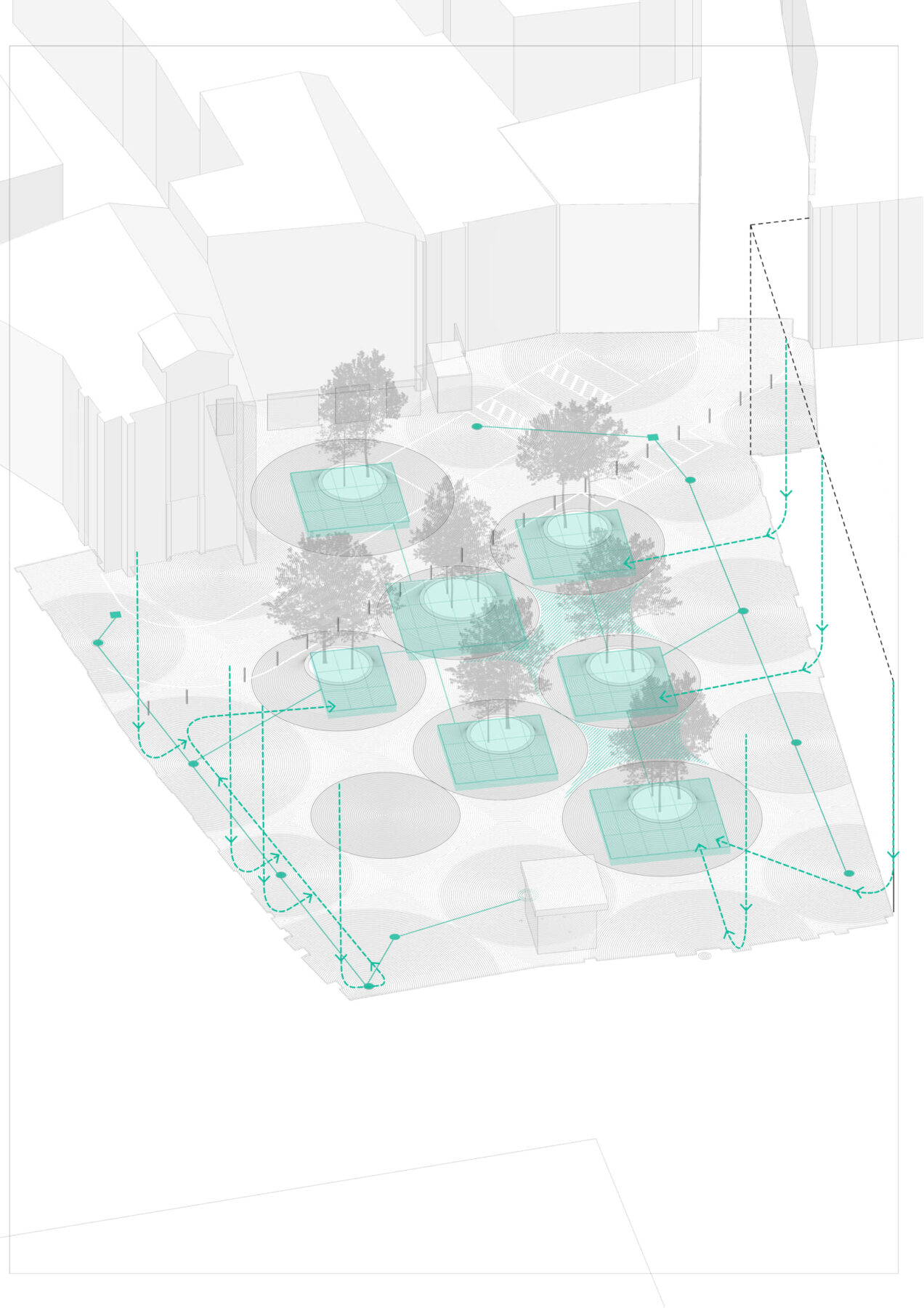
Facts & Credits
Title Piazza Cortevecchia
Typology Architecture, Urban Space, Square
Location Ferrara, Italy
Surface 2.600 m²
Status Completed, 2024
Architecture INOUT architettura
Project Team Mario Benedetto Assisi, Valentina Milani, Giulio Marchetti, Giovanni Gibertini (architects)
Hydraulic engineering David Voltan
Agricultural engineering Giovanni Morelli
Photography ©Simone Bossi
Text by the authors
READ ALSO: ESO 2025: "EMBRACING CHAOS IN A SMART WORLD" // Meet the speakers // Mara Papavasileiou, Micromega
